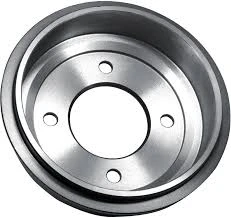
-
 Afrikaans
Afrikaans -
 Albanian
Albanian -
 Amharic
Amharic -
 Arabic
Arabic -
 Armenian
Armenian -
 Azerbaijani
Azerbaijani -
 Basque
Basque -
 Belarusian
Belarusian -
 Bengali
Bengali -
 Bosnian
Bosnian -
 Bulgarian
Bulgarian -
 Catalan
Catalan -
 Cebuano
Cebuano -
 Corsican
Corsican -
 Croatian
Croatian -
 Czech
Czech -
 Danish
Danish -
 Dutch
Dutch -
 English
English -
 Esperanto
Esperanto -
 Estonian
Estonian -
 Finnish
Finnish -
 French
French -
 Frisian
Frisian -
 Galician
Galician -
 Georgian
Georgian -
 German
German -
 Greek
Greek -
 Gujarati
Gujarati -
 Haitian Creole
Haitian Creole -
 hausa
hausa -
 hawaiian
hawaiian -
 Hebrew
Hebrew -
 Hindi
Hindi -
 Miao
Miao -
 Hungarian
Hungarian -
 Icelandic
Icelandic -
 igbo
igbo -
 Indonesian
Indonesian -
 irish
irish -
 Italian
Italian -
 Japanese
Japanese -
 Javanese
Javanese -
 Kannada
Kannada -
 kazakh
kazakh -
 Khmer
Khmer -
 Rwandese
Rwandese -
 Korean
Korean -
 Kurdish
Kurdish -
 Kyrgyz
Kyrgyz -
 Lao
Lao -
 Latin
Latin -
 Latvian
Latvian -
 Lithuanian
Lithuanian -
 Luxembourgish
Luxembourgish -
 Macedonian
Macedonian -
 Malgashi
Malgashi -
 Malay
Malay -
 Malayalam
Malayalam -
 Maltese
Maltese -
 Maori
Maori -
 Marathi
Marathi -
 Mongolian
Mongolian -
 Myanmar
Myanmar -
 Nepali
Nepali -
 Norwegian
Norwegian -
 Norwegian
Norwegian -
 Occitan
Occitan -
 Pashto
Pashto -
 Persian
Persian -
 Polish
Polish -
 Portuguese
Portuguese -
 Punjabi
Punjabi -
 Romanian
Romanian -
 Russian
Russian -
 Samoan
Samoan -
 Scottish Gaelic
Scottish Gaelic -
 Serbian
Serbian -
 Sesotho
Sesotho -
 Shona
Shona -
 Sindhi
Sindhi -
 Sinhala
Sinhala -
 Slovak
Slovak -
 Slovenian
Slovenian -
 Somali
Somali -
 Spanish
Spanish -
 Sundanese
Sundanese -
 Swahili
Swahili -
 Swedish
Swedish -
 Tagalog
Tagalog -
 Tajik
Tajik -
 Tamil
Tamil -
 Tatar
Tatar -
 Telugu
Telugu -
 Thai
Thai -
 Turkish
Turkish -
 Turkmen
Turkmen -
 Ukrainian
Ukrainian -
 Urdu
Urdu -
 Uighur
Uighur -
 Uzbek
Uzbek -
 Vietnamese
Vietnamese -
 Welsh
Welsh -
 Bantu
Bantu -
 Yiddish
Yiddish -
 Yoruba
Yoruba -
 Zulu
Zulu
Key Differences Between Disk Brakes and Drum Brakes for Automotive Performance
Differences Between Disc Brakes and Drum Brakes
When it comes to vehicle braking systems, two predominant types are frequently discussed disc brakes and drum brakes. Each type has its own unique design, advantages, and disadvantages that can significantly impact vehicle performance, maintenance, and safety. Understanding the differences between disc brakes and drum brakes is essential for anyone interested in automotive technology or looking to enhance their vehicle's braking efficiency.
Design and Functionality
Disc brakes consist of a flat, circular disc that is attached to the wheel hub. When the driver presses the brake pedal, brake pads clamp down on the disc, creating friction and slowing the vehicle. This design allows for efficient heat dissipation, which reduces the chances of brake fade (a reduction in braking power due to overheating).
In contrast, drum brakes utilize a cylindrical drum that rotates with the wheel. Inside the drum, brake shoes are forced outward against the drum's inner surface when the brake pedal is pressed. While this design can be advantageous in certain applications, drum brakes typically generate more heat and can be prone to brake fade under severe conditions.
Performance and Efficiency
One of the most notable differences between disc and drum brakes is their performance efficiency. Disc brakes tend to provide better stopping power and are more responsive, especially in high-performance and heavy-duty vehicles. They can also perform better in wet conditions as the open design allows water and debris to escape more easily, maintaining effective contact between the pads and the disc.
disk brake and drum brake difference

Drum brakes, meanwhile, are generally less effective at dissipating heat. In rigorous driving scenarios, such as frequent hard braking, this can lead to a decline in performance. However, they do have a beneficial aspect of providing more surface area for friction, which makes them suitable for light vehicles and as rear brakes in some applications.
Maintenance and Cost
From a maintenance perspective, disc brakes typically require more frequent replacement of brake pads due to the wear they incur from constant use. However, they are easier to inspect and maintain than drum brakes, which involve more intricate components and a more complex disassembly process for service.
Cost-wise, drum brakes are generally cheaper to manufacture and install, making them a popular choice for budget-conscious car manufacturers and consumers. However, the long-term performance disadvantages may outweigh the initial cost savings.
Conclusion
In summary, both disc and drum brakes have their own sets of advantages and disadvantages. Disc brakes are favored for their performance, responsiveness, and effective heat dissipation, making them ideal for a wide range of vehicles. On the other hand, drum brakes are cost-effective and suitable for lighter vehicles. When choosing a braking system, it's essential to consider factors such as vehicle type, intended use, and maintenance requirements to make an informed decision. Understanding these differences can lead to safer driving and improved vehicle performance.
-
What Are Drum BrakesNewsJul.07,2025
-
Understanding Brake Drum MaterialNewsJul.07,2025
-
Semi-Trailer Brake Drum: A Key Component for Extreme Loads and Long-Distance TransportNewsJul.07,2025
-
Drum Brake Pads for SaleNewsJul.07,2025
-
Brake Drums for SaleNewsJul.07,2025
-
Brake Drum ManufacturerNewsJul.07,2025
-
Aluminum Brake Drums: The Future of High-Performance CarsNewsJul.07,2025
